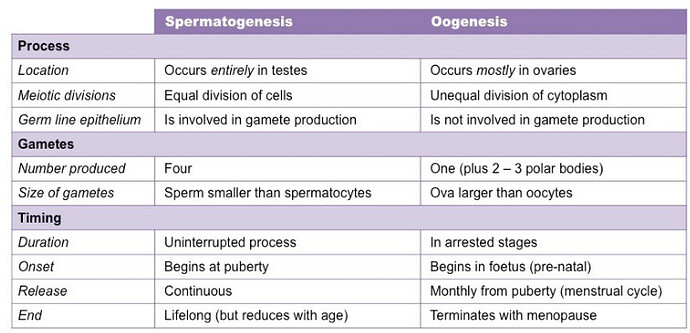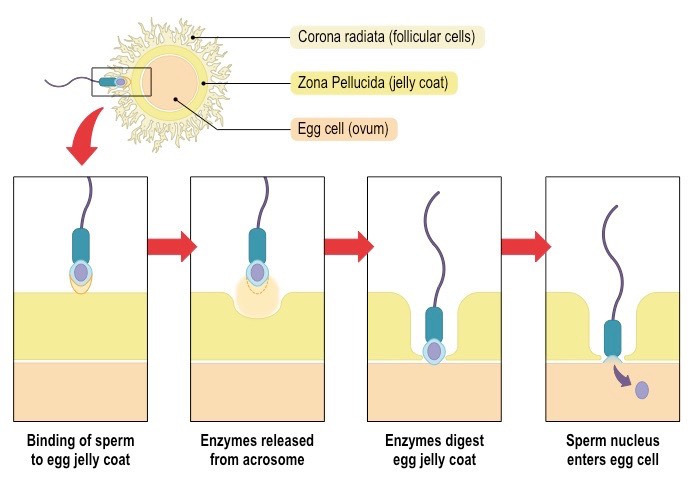GAMETOGENESIS
-
Gametogenesis occurs in the gonads
-
Explain the steps of spermatogenesis

-
A testis comprisess seminiferous tubule of two different cell populations: Leydig cells and Sertoli cells
-
Sertoli cells ensure the nourishment of the developing spermatozoa, and Leydig cells produce testosterone
-
Describe the structure of the male reproductive tissue
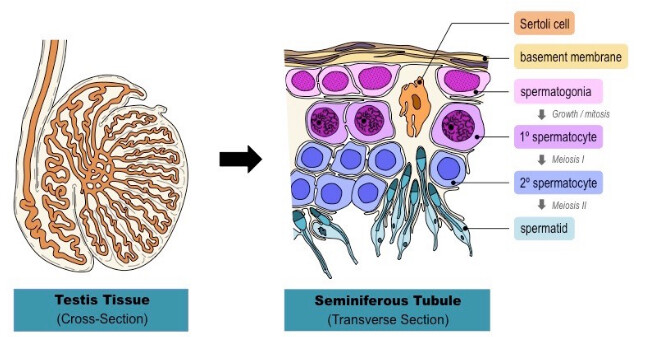
- Describe the structure of a sperm cell
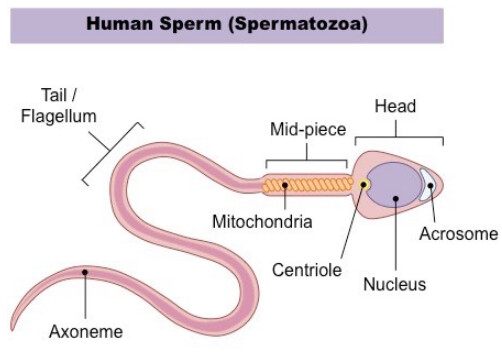
-
What is the axoneme for? Microtubules that help with motion
-
The mid-piece of the sperm cell is rich in mitochondria
-
Spermatogenesis lasts 74 days
-
Structures contributing to semen production are:
- prostate gland
- seminal vesicle
- epididymis
- testis
-
What is capacitation? It improves the sperm’s motility and destabilizes the acrosome cap to ensure proper acrosome reaction.
-
What are the steps of acrosome reaction?
- the sperm binds to the egg jelly coat
- the enzymes inside the acrosome are released
- the enzymes digest the jelly coat
- the sperm nucleus penetrates the egg
-
Seminal vesicles provide semen with fructose and other nutrients
-
The prostate gland produces alkaline fluids: this neutralizes the vaginal fluids, which are acid.
-
In males, LH has an effect on leydig cells for testosterone production
-
In males, FSH has an effect on Sertoli cells for sperm development
-
Testosterone helps complete spermatogenesis by triggering the second meiotic division of spermatocytes
-
A spermogram is used to analyze the fertility potential of males
-
A spermogram takes into account the following criteria:
- total sperm count in the ejaculate
- ejaculation volume
- sperm concentration
- total motility
- sperm morphology
-
What is epididymal maturation? ensemble of chemical and morphological changes that happen to the sperm cells
-
Describe the steps of oogenesis

-
Spermatogenesis is a lifelong process while oovegenis has arrested stages and occurs monthly from puberty until menopause
-
The 4 stages of maturation of an egg are called:
- oogonium
- oocyte I
- oocyte II
- ovum (egg)
-
Primordial follicles contain primary oocytes that are locked in prophase I
-
The secondary oocyte is locked in metaphase II unless there is fertilization
-
Describe the different stages of an egg
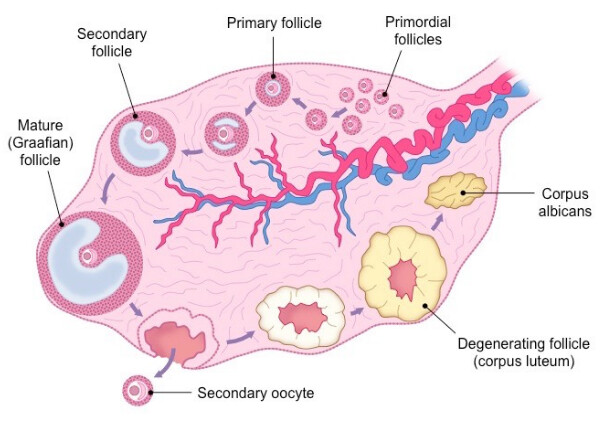
-
The egg is surrounded by the zona pellucida and corona radiata
-
The zona pellucida’s role is to preserve the egg from being fertilized. It is made of glycoproteins and can only be penetrated if the acrosomal reaction occurs (when the sperm digest the ZP)
-
The corona radiata has a structural and nourishing role
-
Polyspermy is prevented by the release of the components of the cortical granules
-
What is polyspermy? Multiple fertilization of 1 egg
-
Cite the differences between spermatogenesis and oogenesis
